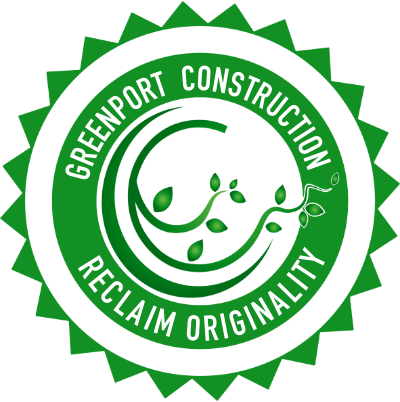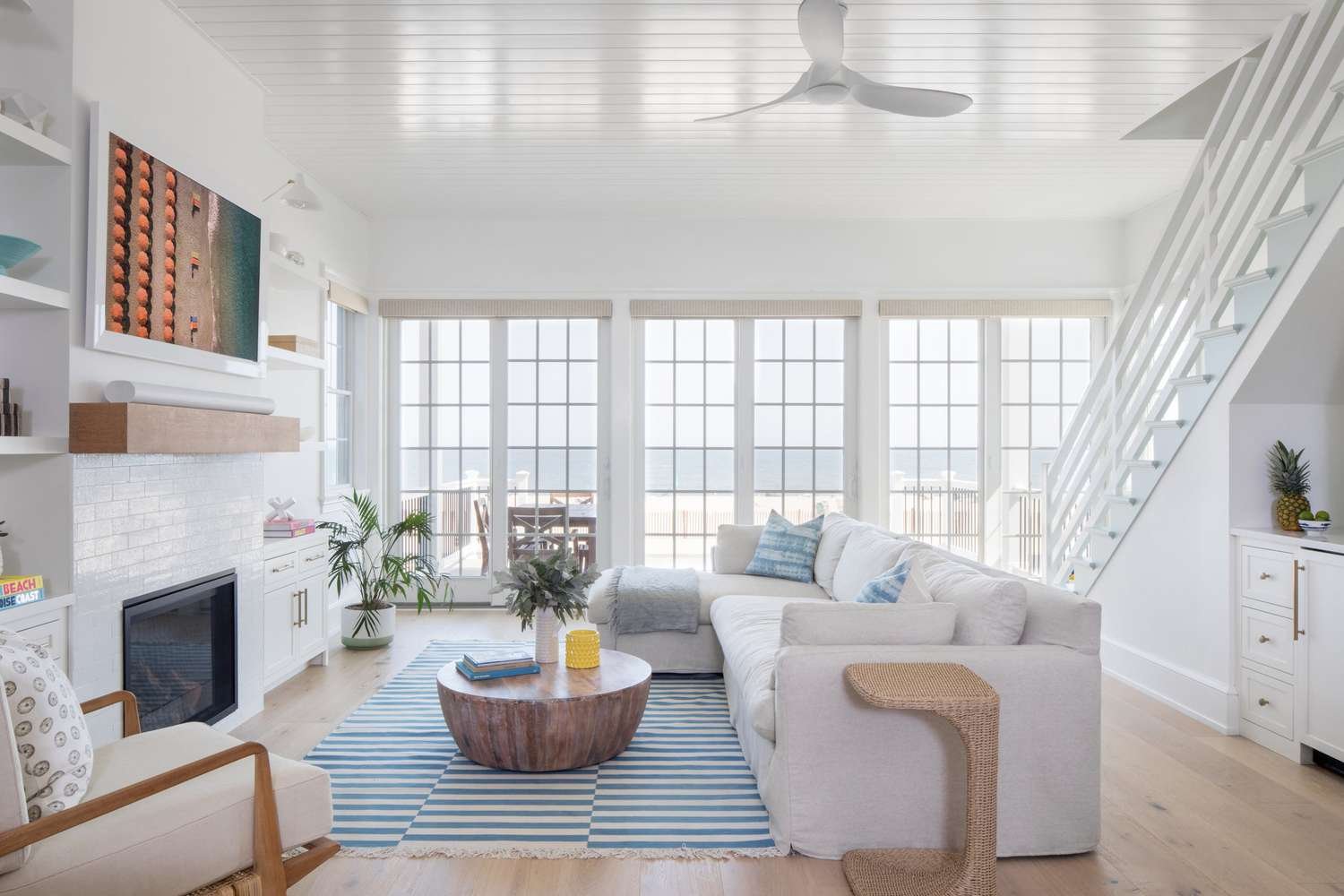Get to know your interior design style
Quick Tip: Want to try a new style or not sure if you can pull off a look? Try starting in a small space, like a guest bedroom or hall bath!
Scandinavian
Hailing from the Nordic region, Scandinavian design is known for its simplicity, functionality, and use of natural materials. It features light colors, clean lines, and a focus on creating a cozy and inviting atmosphere. Scandinavian design believed that one should be in harmony with his/her environment, and things should be made to last rather than to be replaced.
In 1960, a design showcase called the Arts of Denmark Exhibition was held at New York’s Metropolitan Museum of Arts. Exhibitions like these played a big role in spreading the word about Scandinavian Design across North America.
Scandinavian Interior Design
Scandinavian Interior Design
Industrial
Inspired by converted warehouses and factories, industrial style embraces raw and unfinished elements. Exposed brick, concrete floors, metal accents, and open spaces are standard features in this design style.
Industrial interior design became popular alongside loft-style living in large cities in the 1960’s and 70’s. Cities were experiencing rapid growth and “traditional” living spaces were becoming more difficult to find. Old warehouses and factories began to be reimagined for residential and commercial use.
Industrial Interior Design
Industrial Interior Design
Bohemian
Bohemian, or boho style embraces a carefree and eclectic aesthetic. It often incorporates vibrant colors, patterns, and an abundance of plants and natural materials, creating a relaxed and artistic vibe.
During the Romantic Era of the 19th century and into the early 20th century the bohemian style continued to evolve among popular artists and writers who rejected mainstream societal norms and embraced a more liberated, free-spirited way of life. This era’s aesthetic featured a mix of patterns, textures, and colors, often inspired by travels and various cultures.
The bohemian style gained significant popularity in the 1960’s and 70’s, aligning with the countercultural movements of the time. The hippie movement, which embraced freedom, individuality, and anti-materialism, heavily influenced boho design.
Bohemian design stayed popular among its followers and has had a resurgence of popularity in the 2000’s - known for its vibrant colors, layered textures, ethnic prints, and handmade items with a focus on sustainability and artisanal craftsmanship.
Bohemian Interior Design
Bohemian Interior Design
Mid-Century Modern
Popularized in the mid-20th century, this style features iconic designs from the 1950’s and 1960’s. It emphasizes simplicity, organic shapes, and functionality with clean lines, bold colors, and retro-inspired furniture.
The post WW2 era saw a boom in materials and construction techniques including plywood, steel and glass. These materials became staples of mid-century modern design. Famous architects like Frank Lloyd Wright and Le Corbusier emphasized open floor plans and integration with nature by using large windows and natural materials.
Joseph Eichler, a real estate developer with a vision for modern, affordable housing, collaborated with architects to design homes that embraced mid-century modern principles. His aim was to make modernist architecture accessible to middle-class families. The first Eichler homes were built in 1950 in the San Francisco Bay Area. These homes are known for their central courtyards, sometimes completely open to the natural elements.
Many people can recognize the Eames chair, created by Charles and Ray Eames as well as the Noguchi table, created by Isamu Noguchi. They created innovative furniture designs and sculptural pieces that have a timeless appeal and are still seen in many homes today.
Mid-Century Modern Interior Design
Mid-Century Modern Interior Design
Mid-Century Modern Interior Design, Eames Chair and Noguchi Table
Coastal
Evoking a relaxed beachside vibe, coastal style incorporates light colors, natural textures, and nautical elements. It creates a breezy and serene atmosphere reminiscent of coastal living. Coastal design has roots in various seaside communities around the world, from New England beach cottages to Mediterranean coastal villas.
The modern coastal style began to take shape in the mid-20th century, with the rise of vacation homes and seaside resorts. Designers started to formalize and popularize coastal aesthetics, focusing on casual, relaxed living. Today this design style can be seen from seaside homes all the way to inland properties wishing to draw on the relaxation of coastal living.
Coastal Interior Design
Coastal Interior Design
Farmhouse
Inspired by rustic country homes, farmhouse style combines vintage charm with modern elements. It features natural materials, distressed wood, neutral colors, and cozy textiles, creating a warm and inviting ambience.
The traditional farmhouse design has roots in rural architecture, where homes were built for practicality and durability and used local materials and were readily available in rural areas.
In the early 20th century, the farmhouse style began to evolve, incorporating elements of Arts and Crafts design, which emphasized handmade quality and natural materials.
This revival was influenced by a desire for more practical, comfortable living spaces that still retained a nostalgic, rustic charm with modern comfort. TV shows like “Fixer Upper” with Chip and Joanna Gaines, played a significant role in popularizing the modern farmhouse aesthetic, making it a widely recognized and sought-after style.
Farmhouse Interior Design
Farmhouse Interior Design
Modern
Clean lines, minimalism, and a focus on open spaces characterize modern interior design. It often features neutral color palettes, sleek furniture, and a sense of simplicity and functionality.
The history of modern interior design can be traced back to the Industrial Revolution. This period saw a shift from handmade products to mass-produced goods. This new way of production required new designs for factories using industrial materials. These designs were characterized by their functionality and simplicity. As the Industrial Revolution came to an end, so did the need for these utilitarian designs.
New interior design styles that emerged were more concerned with creating pleasing aesthetics rather than function, however the simplicity and minimalism of modern design has stayed strong throughout the decades of change.
Modern Interior Design
Modern Interior Design
Organic Modern
Organic modern is neutral, inviting, and polished yet casual. It relates to modern in its clean aesthetic and color palette but this style is all about layering neutral textiles and textures to create interest rather than introducing additional color. In this style, you’ll find lots of light-toned woods and relaxed textiles mixed with iconic lighting done in black, brass, and chrome.
Organic Modern Design was a natural response to the growing awareness of the importance of the environment and a desire to connect with nature in an urbanized world. The style was catalyzed by the concept of organic building put forth by pioneering architect Frank Lloyd Wright - specifically his iconic Falling Water house completed in 1939.
Modern Organic Interior Design
Falling Water House, Pennsylvania
Falling Water House, Pennsylvania
Contemporary
Like modern design, the contemporary style emphasizes clean lines and simplicity. However, the style is constantly evolving to reflect current trends and can be more eclectic in its mix of materials, textures, and colors.
Contemporary home design style began in the mid to late 20th century and often incorporates eco-friendly and recycled materials and may feature unconventional pieces that stand out including bold colors, asymmetrical shapes and unexpected materials.
Contemporary Interior Design
Contemporary Interior Design
Traditional
Traditional interior design is inspired by 18th and 19th century European décor. Traditional interior design reflects a long history of evolving styles and influences - from the Renaissance to Baroque Periods to the Rococo and Victorian Eras, each period has maintained a focus on elegance, detail, and classic beauty while adapting to contemporary tastes and needs.
Traditional decorating is perfect for those who love antiques, classic art pieces, symmetry, rich woods, luxurious fabrics and other design elements that are rich with history. The layers of textures and patterns bring a sense of history and glamour to the space.
Traditional Interior Design
Traditional Interior Design, Custom Millwork
Transitional
A blend of traditional and contemporary elements, transitional style combines the best of both worlds. It balances classic and modern design, featuring clean lines, neutral colors, and a mix of textures.
Transitional style took off in the mid 1950’s as a response to the stark modern and mid-century styles of the previous era. It was a way to combine the sleek new designs with the comfort of traditional aesthetics but more updated, less fussy and less minimalistic..
Transitional Interior Design
Transitional Interior Design
























